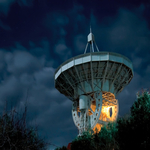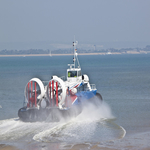Eighth Grade
Here is a list of the main scientific concepts students learn in eighth grade! These science concepts are organized into categories. To start, just click on any link. You can do these in any order at any pace that's right for you.
Chapters 1, 2 & 3: Astronomy
___________________________
Chapter 1
Astronomy: Making Observations
Chapter 1-1
Topic Intro & Explanation Watch the FIRST video explanation on this page ("Planets, Moon & Binoculars")
Chapter 1-2
Activities & Experiments Choose at least two of the activities below.
___________________________
Chapter 2
Our Solar System
Chapter 2-1
Topic Intro & Explanation Watch the SECOND video explanation on this page ("Comets, Asteroids & Meteorites”)
Chapter 2-2
Activities & Experiments Choose one of the activities below.
Chapter 2-3
Activities & Experiments Choose at least two of the activities below.
Chapter 2-4
Topic Intro & Explanation Watch the THIRD video explanation on this page ("The Moon")
Chapter 2-5
Activities & Experiments Choose at least two of the activities below.
Chapter 2-6
Topic Intro & Explanation Watch the FOURTH video explanation on this page ("Solar Astronomy")
Chapter 2-7
Activities & Experiments Choose at least two of the activities below.
- Solar Rotation
- Cosmic Ray Detector
- Fire & Optics
- Light, Lasers and Optics
- Advanced Telescope Building
Chapter 2-8
Topic Intro & Explanation Watch the video title on this page ("Bonus Lab: Distances")
and then complete the Math Lab: Distances
___________________________
Chapter 3
Deep Space Objects: Black Holes
Chapter 3-1
Topic Intro & Explanation Watch the video title on this page ("Black Holes”) and complete the experiments discussed during class.
In addition, you may also opt to complete Black Hole Buckets.
Chapter 3-2
Topic Intro & Explanation
Watch the video title on this page : ("Bonus Math Labs")
Activities & Experiments
Do one or both of the following math labs.
- Math Lab #1: XZ Tauri
- Math Lab #2: Exploding Stars
Chapters 1, 2, & 3 Learning Evaluation
Complete the Learning Evaluation below. Learning evaluation
___________________________
 |
Astronomy This section teaches the big ideas behind Newton and Einstein’s ground-breaking work. Students will discover how to design and build reflector and refractor telescopes, investigate how gravity curves spacetime, identify meteorites, detect black holes, play with the electromagnetic spectrum, and uncover the mysterious forces that shape the incredible universe we call home. |
Chapters 4 & 5 Chemistry
___________________________
Chapter 4
Chemistry Part 1
Chapter 4-1
Topic Intro & Explanation
Watch the FIRST video explanation on this page ("Chemistry: Matter, Atoms...")
Chapter 4-2
Activities & Experiments
Choose at least two of the activities below.
Chapter 4-3
Activities & Experiments
Choose at least two of the activities below.
Chapter 4-4
Topic Intro & Explanation
Watch the SECOND video explanation on this page ("Chemistry: Reactions")
Chapter 4-5
Activities & Experiments
Choose at least one of the activities below.
Chapter 4-6
Activities & Experiments
Choose at least one of the activities below.
___________________________
Chapter 5
Chemistry Part 2
Chapter 5-1
Topic Intro & Explanation
Watch the THIRD video explanation on this page ("Balancing Equations")
Chapter 5-2
Activities & Experiments
Choose one of the activities below.
Chapter 5-3
Activities & Experiments
Choose at least one of the activities below.
Chapter 5-4
Topic Intro & Explanation
Watch the FOURTH video explanation on this page ("Thermodynamics")
Chapter 5-5
Activities & Experiments
Choose one of the activities below (or pick one from the science lesson on Thermodynamics as discussed in class).
Chapter 4 & 5 Learning Evaluation
Complete the Learning Evaluation below.
___________________________
 |
Chemistry Students perform advanced experiments with ammonia, learn how to burn sulfur, ignite colored fires, decompose hydrogen peroxide, detonate bubbles, unlock energy stored in chemical bonds, supercool solutions, calculate the energy of a single peanut, turn copper into silver and gold, and so much more. (Using Apologia? Click here.) |
Chapters 6 & 7: Physics
Chapter 6
Physics of Forces
Chapter 6-1
Topic Intro & Explanation Watch the FIRST video explanation on this page ("Physics: Mechanics")
Chapter 6-2
Activities & Experiments Choose at least two of the activities below.
- Detecting the Gravitational Field
- A Weighty Issue
- Forever Falling
- Newton’s First Law of Motion
- Net Forces
Chapter 6-3
Activities & Experiments Choose at least three of the activities below.
- Detecting the Electric Field
- Detecting the Magnetic Field
- Detecting the Electromagnetic Field
- Flying Paperclip
- Force-full Cereal
- Maxwell’s Third Equation
- Maxwell’s Fourth Equation
Chapter 6-4
Topic Intro & Explanation Watch the SECOND video explanation on this page ("Physics: Motion")
Chapter 6-5
Activities & Experiments Choose at least two of the activities below.
___________________________
Chapter 7
Physics of Motion
Chapter 6-1
Topic Intro & Explanation Watch the THIRD video explanation on this page ("Physics: Energy")
Chapter 7-2
Activities & Experiments Choose at least two of the activities below.
Chapter 7-3
Topic Intro & Explanation Watch the FOURTH video explanation on this page ("Physics")
Chapter 7-4
Activities & Experiments Choose at least one of the activities below.
Chapter 7-5
Topic Intro & Explanation Watch the FIFTH video explanation on this page ("Physics")
Chapter 7-6
Activities & Experiments Choose at least one the activities below.
Chapter 7-7
Topic Intro & Explanation Watch the video explanation on this page ("Physics: Calculations") and take notes during the three videos.
Chapter 7-8
Activities & Experiments Choose at least one the activities below.
Chapters 6 & 7 Learning Evaluation
Complete the Learning Evaluation below. Learning evaluation
___________________________
 |
Physics of Forces, Motion & Energy Continue the adventure in physics under Newton’s work on the three laws of motion. Students get a crash-course in projectile motion as they build g-force accelerometers, float hovercraft on both land and water, build a rocket car, and measure the Earth’s magnetic pulse. (Families using Apologia click here.) |
